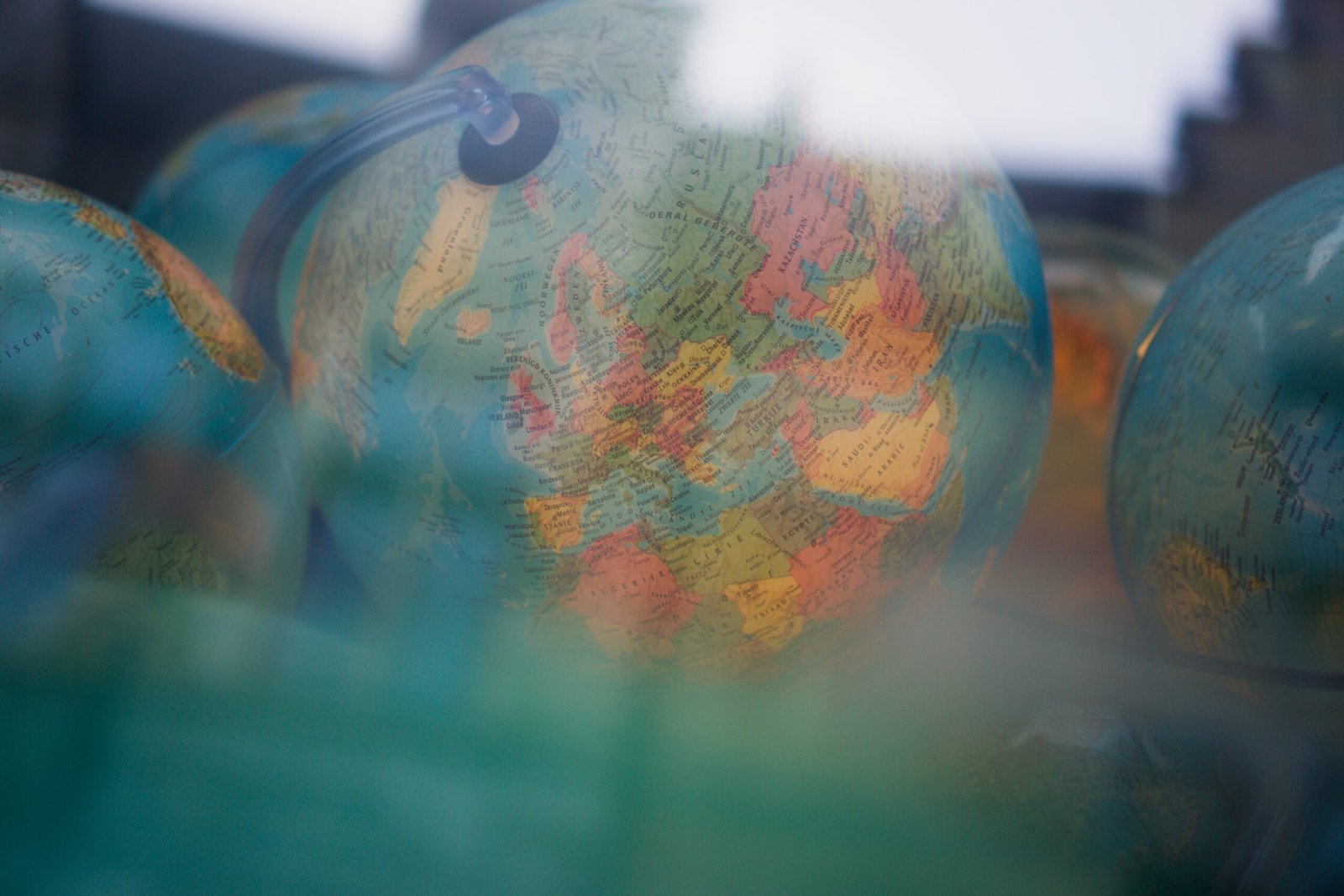Xi Signals Firm Strategy but Flexible Tactics at China’s Central Foreign Affairs Work Conference
Executive Summary:
- The readout from the Central Foreign Affairs Work Conference (CFAWC) at the end of December indicated an emerging strategy of countering US leadership by mobilizing the support of Global South countries while dividing the West on contentious global issues.
- Recent changes in official discourse and new language that now forms part Xi’s messaging to visiting politicians makes clear Beijing’s enhanced conviction of the need to actively shape and influence world events.
- The CFAWC meeting signaled a turn away from the more abrasive forms of “wolf warrior” diplomacy. Xi’s desired shift in rhetoric does not mean that PRC diplomats will be less assertive in communicating their preferences overseas.
China hosted two international events in late March that seemed to send different messages to the world. Following the China Development Forum in Beijing, Chinese leader Xi Jinping (习近平) advised a group of US executives that “promoting world economic recovery and resolving international and regional hotspot issues require China-US coordination and cooperation” (Xinhua, March 27). The next day, his number-three Zhao Leji (赵乐际) told the Boao Forum for Asia in Hainan that Asian countries themselves should “jointly maintain security” and form a “common regional market” (MOFA, March 28). Does Beijing want to work with Washington or without it?
Both speeches operate within the framework of a foreign policy strategy outlined by the Chinese Communist Party (CCP) at a Central Foreign Affairs Work Conference (CFAWC) that Xi held in Beijing last year (Xinhua, December 28, 2023). These conferences convey to Party cadres and members the leadership’s authoritative assessments about the international achievements, external environment, and diplomatic priorities of the People’s Republic of China (PRC). This was Xi’s third CFAWC, after convenings in November 2014 and June 2018, and only the fifth such gathering in the post-Mao era, with Jiang Zemin (江泽民) and Hu Jintao (胡锦涛) respectively hosting analogous meetings in July 1991 and August 2006.
The recent CFAWC deserves more attention, given its likely significance in establishing the outlines of PRC foreign policy over the next few years (cf., GMF, February 6). Three themes stand out. First, the PRC’s rising diplomatic focus on leadership of the Global South; second, Beijing’s enhanced conviction about its need to shape world events; and third, Xi’s turn away from “wolf warrior” diplomacy. Understanding these themes helps to resolve the seeming contradiction between the speeches mentioned above.
Rising Focus on the Global South
The CFAWC provided what is perhaps the strongest articulation yet of the Party’s emerging strategy to counter US leadership by mobilizing the support of Global South countries and by trying to divide the West on contentious global issues like climate change, free trade, and Palestine. Most revealingly, the readout said Beijing must “firmly occupy the international moral high ground and unite and win over the world majority.” Furthermore, the growing power of the PRC and other non-Western countries means that “China’s development faces new strategic opportunities” and its diplomacy “will enter a new stage in which it can be more effective” and “elevate China’s international influence to new heights.”
The readout clarifies the importance of Xi’s concept of a “community with a shared future for mankind (人类命运共同体)” (CSFM) in this vision. [1] The CSFM is the “core concept” of Xi Jinping Thought on Diplomacy and “a Chinese solution to what kind of world we should build and how we should build it.” Moreover, the concept is said to embody the worldview of Chinese communists, reflect the laws of development of human society, and respond to the universal aspirations of people from all countries. Xi sees his ideas as important and even necessary contributions to international order-building.
What would a CSFM look like? The objective is to create a world of “sustained peace,” “universal security,” “shared prosperity,” “openness and tolerance,” and “cleanliness and beauty.” What these boilerplate phrases signify in Party discourse is a world without US military alliances, where the PRC can advance its territorial objectives and freely pursue its economic model at home and abroad, and where there is acceptance of authoritarian governments and the privileging of collective over individual rights. Put simply, a CSFM means building an international system that better reflects the Party’s interests, preferences, and values.
How will Beijing pursue a CSFM? The “path to realization” is through advancing more equitable global governance, the “universal guideline” is practicing shared human values, and the “fundamental support” is pushing for a new type of international relations. More concretely, “strategic leadership” comes from implementing Xi’s Global Development Initiative (GDI), Global Security Initiative (GSI), and Global Civilization Initiative (GCI). Furthermore, the Belt and Road Initiative (BRI) is a “practical platform.” Beijing does not want to conquer the world, but it does want to direct it away from thwarting the PRC and toward “collaborating on responding to challenges and realizing mutual prosperity.”
At the heart of all these policies is the Global South. Developing countries are the main audience for the Chinese pitch to reorient the international order away from the West. The GDI, GSI, and GCI should now be understood as outreach initiatives to slowly operationalize the PRC’s long-held desires to reform the international economic, military, and normative orders. The BRI, injected with new financing at the third Belt and Road Forum last October, has been revitalized as a tool of economic diplomacy (Xinhua, October 18, 2023). Beijing will likely keep boosting its investments in multilateral institutions—especially PRC-heavy groupings such as BRICS and the Shanghai Cooperation Organization—and seek to mobilize development-first coalitions more actively on global issues such as climate change, conflict zones, and free trade.
New Conviction to Shape Global Trends
The CFAWC unveiled a shift in the Party’s longstanding discourse on “world multipolarization (世界多极化)” and “economic globalization (经济全球化).” The former concept generally refers to the PRC and other developing countries becoming relatively more powerful in the international system, especially compared to US unipolarity in the 1990s and 2000s and to the bipolar Cold War order. The latter means the integration of national economies through international trade, foreign investment, and technological exchange, a process from which China has derived significant asymmetric benefits. The Party Congress report first mentioned multipolarization in 1992, following the collapse of the Soviet Union, and globalization in 1997, when free trade dominated the international agenda. [2]
Leadership statements on the course of world multipolarization and economic globalization reflect authoritative assessments about the favorability of the PRC’s external environment and Beijing’s prospects for advancing its international interests. In 2002, as the United States flexed its geopolitical muscles after 9/11, Jiang made the muted evaluation that the two trends were “developing in twists and turns (在曲折中发展)” (People’s Net, November 8, 2002). Hu declared world multipolarization to be “inevitable (不可逆转)” in 2007—amid looming US economic difficulties and strategic quagmires in the Middle East—but by 2012 had returned to a more conservative view that multipolarization and globalization were “deepening in their development (深入发展)” (People’s Net, October 15, 2007; People’s Net, November 8, 2012). Xi maintained this view in 2017, but by the next year a perception of rising political dysfunction in the United States and Europe led to more optimistic assessments, including at the CFAWC in 2018, which said the two trends were “accelerating in their advancement (加速推进)” (Xinhua, June 23, 2018).
The readout of last year’s CFAWC declared that the PRC “advocates for a world multipolarization that is equitable and orderly, and for an economic globalization that is universal and inclusive.” It elaborated that equitable means creating an international system more favorable to developing countries, while orderly refers to abiding by the UN Charter to ensure the process of multipolarization is stable. Universal economic globalization entails prioritizing the demands of developing countries to address imbalances caused by the global allocation of resources, and being inclusive requires opposing unilateralism and protectionism, promoting the liberalization and facilitation of trade and investment, and addressing structural problems that hinder the development of the world economy.
This new formulation represents a shift in emphasis from the Party describing trends in the international system to advocating for the direction that these trends should take. To be sure, Beijing has always wanted multipolarization and globalization, and Xi has encouraged some foreign leaders to help China promote these trends (e.g., Xinhua, August 23, 2023). But the recent change in official discourse and the expanded detail at a CFAWC hints at more focus on influencing these phenomena. The new language is now a standard part of Xi’s message to visiting politicians.
This policy development aligns with a shift in Beijing’s assessment of the international environment. Previously, the Party believed the PRC was enjoying a “period of strategic opportunity,” whereby a favorable international environment enabled Beijing to focus on domestic development. But in Xi’s report to the 20th Party Congress in October 2022, he said that the PRC had entered a period in which “strategic opportunities co-exist with risks and challenges, and uncertain and unpredictable factors are rising.” This darker outlook coincides with unbalanced growth and governance problems at home, growing hostility and economic decoupling toward the PRC in the West, and the continuing drag of COVID-19 and regional conflicts on the global economy.
The Party appears to believe both that the US-led embrace of strategic competition and technological containment means that the PRC must do more to advance its preferences in international affairs and that a more powerful PRC now can do more to shape global trends. Beijing may gradually become more interested and willing to insert itself in global hotspots, such as the current conflicts in Gaza and Ukraine, even though its current involvements remain inchoate and insubstantial.
Diplomatic Rhetoric Tones Down
Beijing is toning down “wolf warrior” diplomacy, at least for now. The CFAWC implied no change in Xi’s objective to build the PRC into a country that “leads the world in comprehensive national power and international influence” (Xinhua, October 16, 2022). But the readout said Beijing should “enhance the rationality, predictability, activeness, and creativity of foreign affairs work.” This line suggests a tactical adjustment to Beijing’s diplomacy to pursue its strategic ambitions in a less abrasive manner.
The CFAWC insinuates a belated disapproval of the inflammatory “wolf warrior” tactics that many PRC diplomats adopted early in Xi’s second term, especially following his call in 2019 for cadres to “show fighting spirit” (Xinhua, September 3, 2019). The following years brought a slew of aggressive diplomatic actions that offended other countries, threatened other governments, and spread conspiracy theories, all of which contributed to the PRC hitting record-high unfavourability ratings in many Western countries (e.g., Pew Research Center, July 27, 2023). Xi would have heard complaints directly from Western leaders when he began to travel and receive more visitors after the end of zero-Covid policies in late 2022.
This interpretation is reinforced by a speech that Xi gave right after the CFAWC to diplomats who were gathered in Beijing for the annual Work Conference for Overseas Envoys to Foreign Countries (WKOEFC) (Xinhua, December 29, 2023). That was the first time Xi had addressed this group since 2017, when he debuted the idea of “great changes unseen in a century”—although he posed for photographs at the 2019 event (Xinhua, December 28, 2017; Xinhua, July 17, 2019; China Brief, November 21, 2023). This year he said that the envoys should “be good at widely and deeply making friends,” “do the work of winning people’s hearts and minds,” and “use internationalized language to tell China’s story.”
The importance of Xi’s recent directives is belied by the scant attention that they garnered. They resonate with the PRC’s efforts over the past couple of years to wind down its trade war against Australia and reprioritize diplomacy with the United States, European Union, and other developed democracies. They also accord with Xi’s call for the envoys to “make good use of the magic weapon of the United Front,” Beijing’s mechanisms for quietly mobilizing non-Party groups to support the Party’s preferences.
Beijing seems to have learned from its diplomatic own goals, at least to some extent. The crucial distinction here is between the short-term explosion of “wolf warrior” diplomacy, which seems to be over, and the long-term trend of “assertive” diplomacy, whereby China is progressively exerting more power in international affairs. Indeed, Xi also told his envoys that they should “dare to struggle” and “resolutely defend national sovereignty, security, and development interests.” Beijing will increasingly “assert” its interests, including in ways that exacerbate strategic competition with Washington, but a smarter approach will both enhance stability and challenge Western coordination on policy toward the PRC.
Conclusion
What Xi says matters. Official articles, meetings, and speeches are how he communicates the Party’s priorities to its millions of cadres and almost 100 million members. These sources are incomplete and must be interpreted carefully, but they represent the best insights we have into Xi’s mindset and should be relied on more to adjudicate major questions about his strategic intent. China watchers often refer to PRC politics as a “black box” into which little insight can be gleaned. While that analysis usually holds true for the process by which decisions are made, the Party in fact tells us a lot about what it believes and what it wants. It is concerning that months after the fact, so little public analysis exists on relatively significant events such as the CFAWC and the WKOEFC.
Studying such developments can help contextualize Zhao Leji’s speech to the Boao Forum as part of a permanent diplomatic offensive in the Global South, and Xi’s audience with US executives as a temporary rearguard action in the West to slow threats to Beijing’s broader vision. Moreover, the coexistence of these two policy strands in authoritative sources shows the gap between aspiration and reality in Chinese foreign policy. For all the ambition of Xi’s CSFM and the Party’s desire to promote multipolarization and globalization, Beijing is a way from achieving its goals and recognizes that it faces domestic challenges and international balancing. Xi may say what he wants but that does not mean he can get what he wants.
Notes
[1] The previous formulation in English for “community with a shared future for mankind” was the “community of common destiny” (cf. China Brief, February 26, 2018).
[2] Policy advisors and scholars have identified and advocated for these trends since at least the 1980s. Some argue that the intellectual roots of this discourse begin with Mao Zedong’s “three worlds” theory (see: Pillsbury, 2000).












